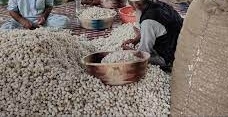Two farmers from Lamberi, Rajouri, have earned significant amounts of money through selling silk. The Central Silk Board has set up the Central Sericulture Research and Training Institute to revive earlier activities in Jammu and Kashmir. The Institute is involved in research and development and human resource development through its network of two Regional Sericulture Research Stations and eight Research Extension Centers. CSR and TI Pampore have developed high-yielding silkworm hybrids and improved mulberry varieties to increase farmers’ income through sericulture. The Silk Samagra Yojana has made sericulture sustainable by supporting the country’s as well as Jammu and Kashmir’s silk industry in an integrated manner. The scheme has benefited around 27,000 families involved in sericulture in the UT.
Modern Technology to Enhance Silk Production in Jammu and Kashmir
The Jammu and Kashmir government aims to improve the silk production industry in the region by providing farmers with training on modern technology. The plan is part of a multi-pronged strategy to revive and develop the sericulture sector in the union territory.
Cocoon growers will receive skill development training, the latest technological advancements, and infrastructure support to transform the sericulture industry in Jammu and Kashmir. The government’s long-term strategy for holistic growth of agriculture and allied sectors will ensure the quality and quantity of products and raise global demand.
To increase leaf availability for rearers and enrich green wealth, the government is working on expanding mulberry plantations. The Forest and Sericulture Departments are collaborating to achieve Jammu and Kashmir’s Green Mission and provide marketing support to cocoon growers in selling their produce locally.
The effort aims to preserve and promote the unique and indigenous craft legacy of Jammu and Kashmir across the globe. The government is prioritizing the adoption of the latest technological advancements in the silk industry to reduce dependence on imported silk. One of the three critical centers in the country for Research and Development, Training, Transfer of Technology, and IT Intervention has been established in Kashmir’s Pampore.
The Department of Sericulture, Rajouri, Mulberry Circle Lamberi recently organized a Kissan Ghosti/Scientific interaction under the ATMA program to educate silkworm rearers about the latest technology and practice for silkworm rearing. The program aims to safeguard the age-old skills being passed down from generation to generation.
During a function, Lt. Governor Manoj Sinha stated that their primary objective is to improve the lives of farmers associated with the silk industry while ensuring the uniqueness, beauty, and ingenuity of Jammu and Kashmir’s crafts dominate the global market.
Jammu and Kashmir Farmers Earn Handsomely from Sericulture
Two farmers from Lamberi, Rajouri, Kundan Lal, and Tilak Raj, have earned significant amounts of money through selling silk. Lal made Rs 91,666.50 in 20 to 25 days by selling 87.6 kg of dry crop, while Raj made Rs 1,32,356 by selling 131.350 kg of silk in the same time frame.
The Central Silk Board (CSB) established the Central Sericulture Research and Training Institute (CSR & TI) at Pampore, Srinagar, in 1994 to revive earlier activities of the CSB in Jammu and Kashmir. The institute is involved in research and development and human resource development through its network of two Regional Sericulture Research Stations and eight Research Extension Centers.
CSR and TI Pampore have developed high-yielding silkworm hybrids and improved mulberry varieties to increase farmers’ income through sericulture. The institute also promotes bivoltine production programs, extends technical support through six clusters, including two mega clusters, and provides state-of-the-art soil testing facilities.
The average yield of bivoltine cocoons has increased significantly due to the continuous efforts of the institute and technological interventions. The Silk Samagra Yojana, launched in 2017-18 under the guidance of the PM, has made sericulture sustainable by supporting the country’s as well as Jammu and Kashmir’s silk industry in an integrated manner.
Under Silk Samagra Phase-I, about 900 silkworm rearers have benefited directly, and about 618 rearing houses have been established. Additionally, the Central Silk Board has allocated Rs 35 crore for Jammu and Kashmir under Silk Samagra Phase-II, benefiting around 27,000 families involved in sericulture in the UT.
Don’t miss interesting posts on Famousbio









